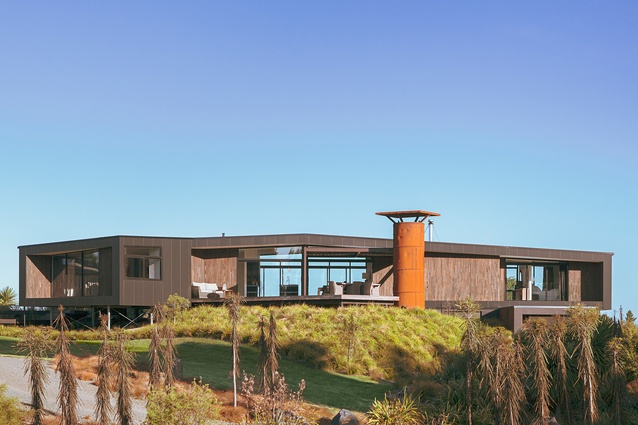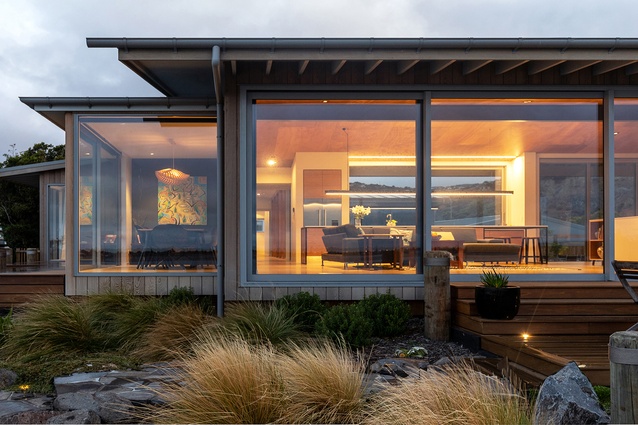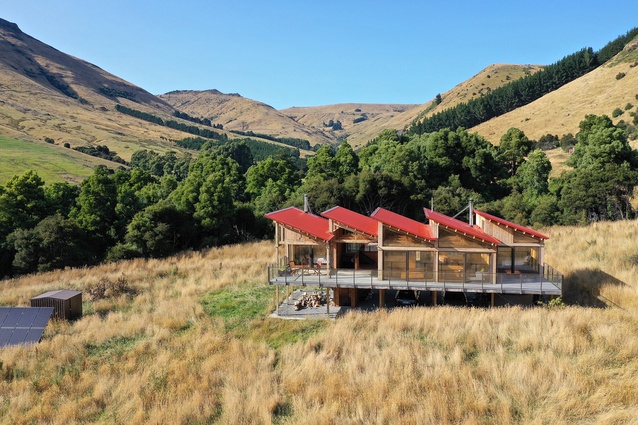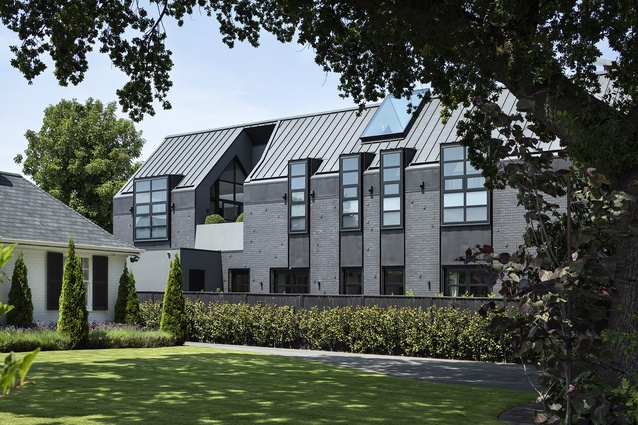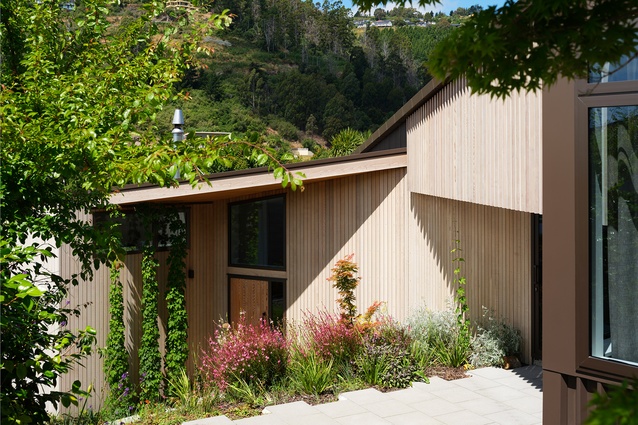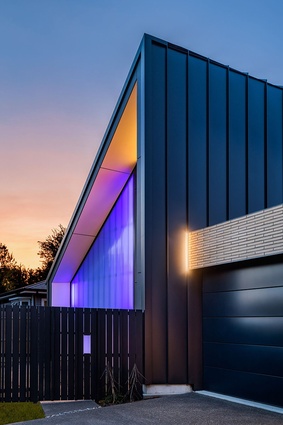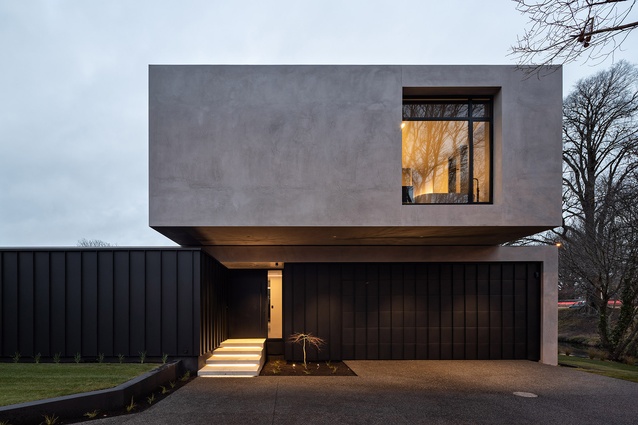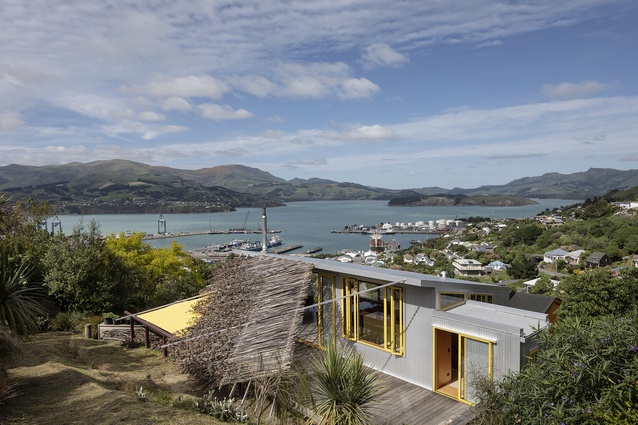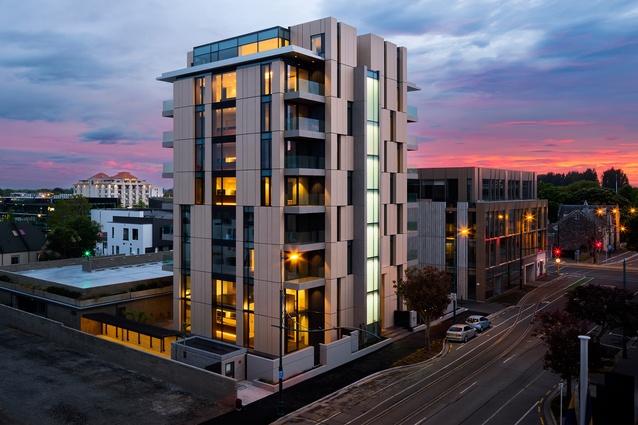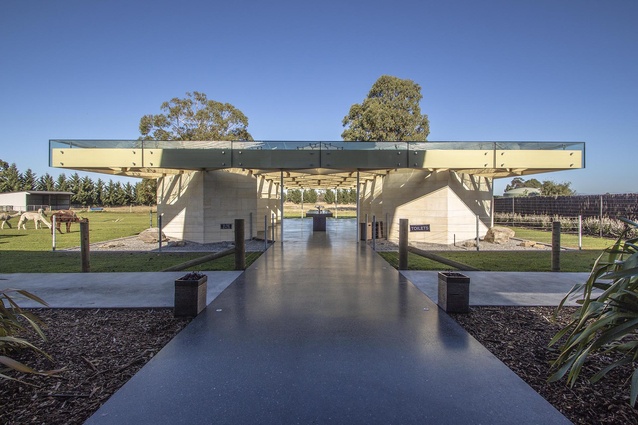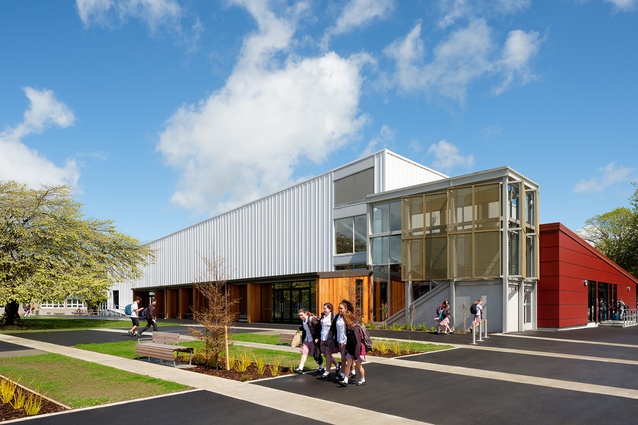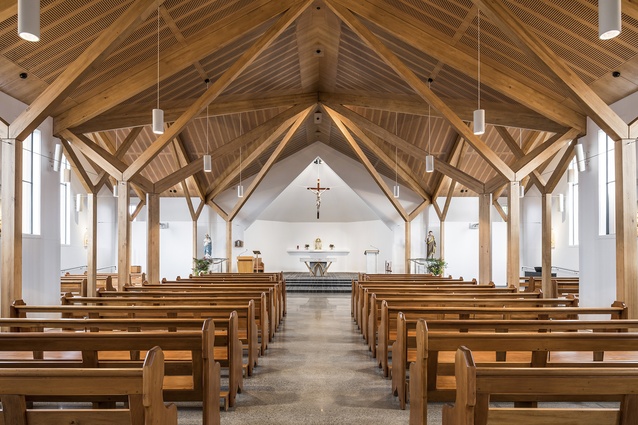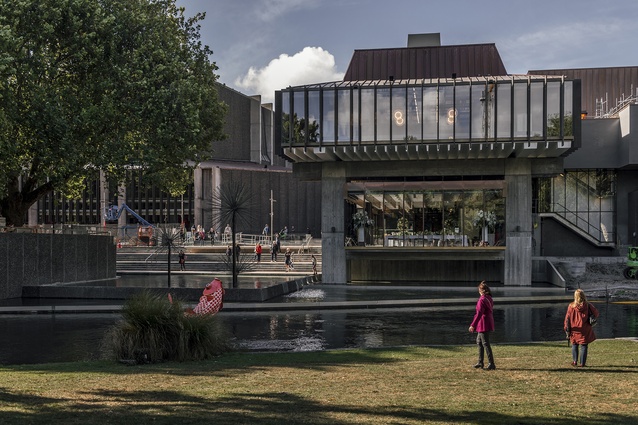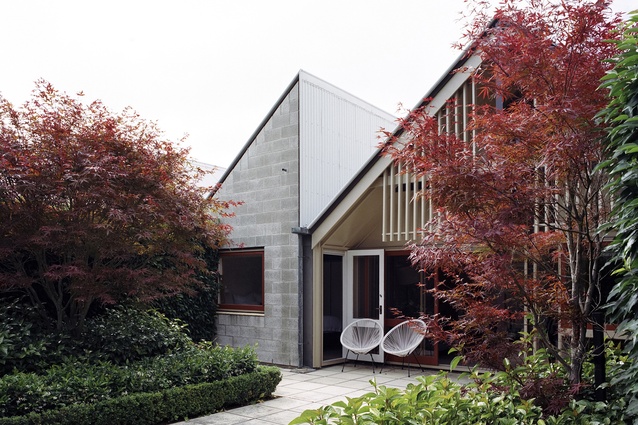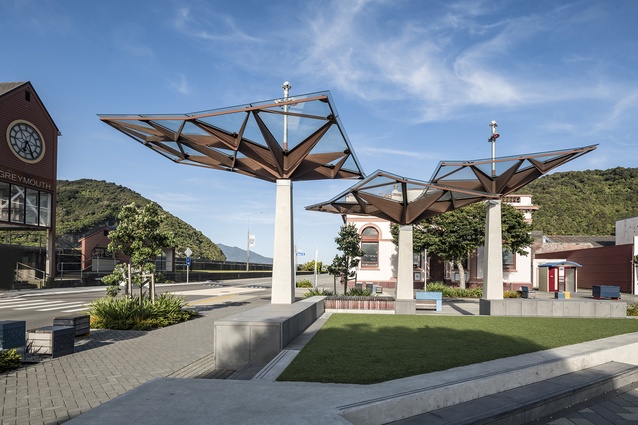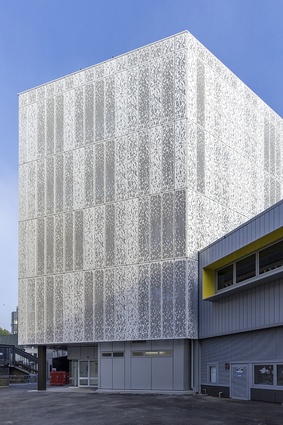Winners revealed: 2020 Canterbury Architecture Awards
The Canterbury branch of Te Kāhui Whaihanga New Zealand Institute of Architects (NZIA) has named 25 winners in its 2020, peer-reviewed, local awards programme. From heritage public spaces to new homes, this year’s winners show how wide-ranging excellence is in the architecture of the region.
The Canterbury Awards were judged by a panel of professionals including convenor Christchurch architect Huia Reriti, who was joined by fellow Christchurch architects Bernadette Muir and Dan Sullivan, Wellington architect Anne Kelly and Christchurch architectural designer Tobin Smith.
The jury was impressed by shortlisted projects across categories. “Canterbury housing, in particular, is in good design health,” Reriti said, “and it was especially pleasing that several architects’ own houses won awards.”
See all the winners below with jury citations:
Housing
Wrightmann House by Athfield Architects
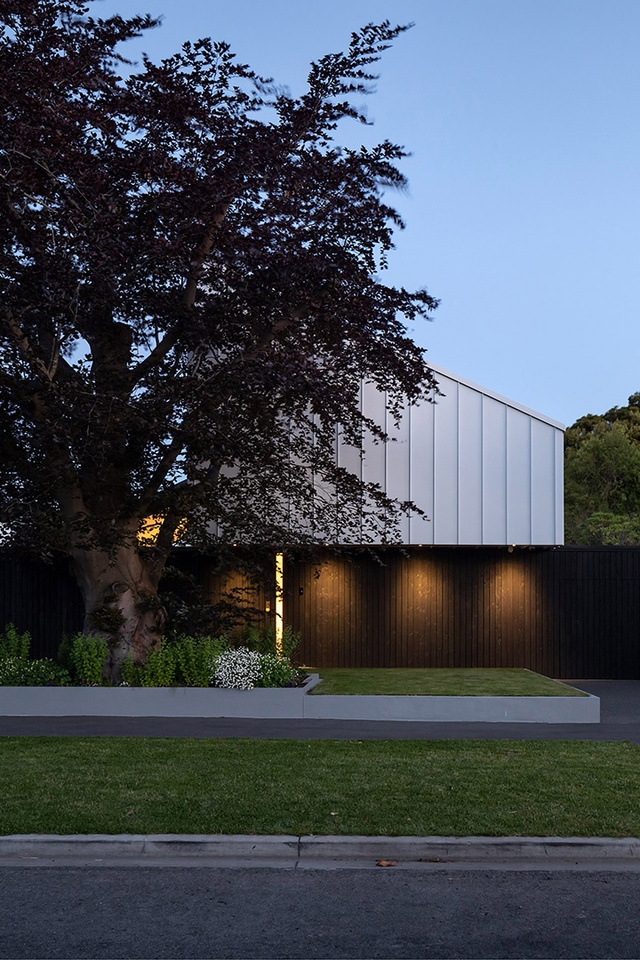
The brief called for a home that doubles as a private art gallery. The architectural solution deftly balances public and private space, announcing itself via a pared-back white gable form cantilevering over a black fence. The fence line was pulled back from the site boundary to create a public space; a tiny pocket park on this suburban street. Living spaces hang from the central corridor in an offset grid, with rooms designed around a series of specimen trees to create ‘pavilions in the garden’. Internally, natural light is carefully curated and corralled across walls that hero the owners’ extensive art collection.
Resene Colour Award
What other colour to use on the walls of a home art gallery but white? In a home that entertains extensive play of natural light and a myriad of media via the owners’ art collection, the selection of the right white has worked wonders. In this case, a neutral tonal story provides the ideal combination of clarity and warmth on walls that are all about the art.
Hursley Terrace by AW Architects
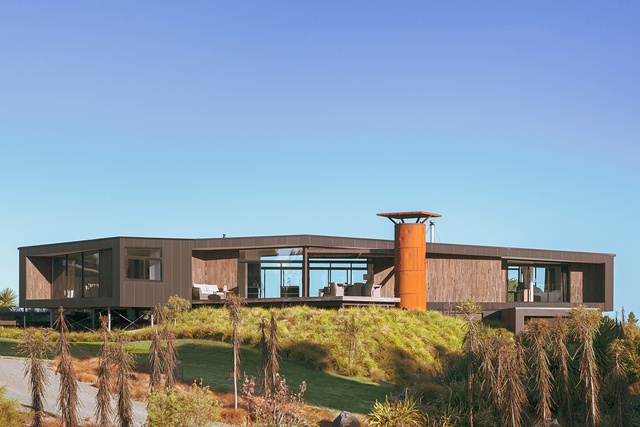
Confidently positioned on the crest of an undulating landscape, this dwelling snakes along its underlying topography. The built form results in a play between mass and transparency, lightly touching the site at the upper level and hunkering in at the lower to create a clear connection to view, landscape and gully. Multiple outdoor living areas are provided by the simple plan, forming shelter from prevailing exposures, while a gentle crank in roof form allows this dwelling to sit unobtrusively within its wider setting. Despite use of prefabricated and modular construction elements, this building feels anything but off-the-shelf. A simple, well-considered architectural response that provides a new model for living more sympathetically within our grand landscapes.
Ship House by Banbury Architects and Upoko Architects in association
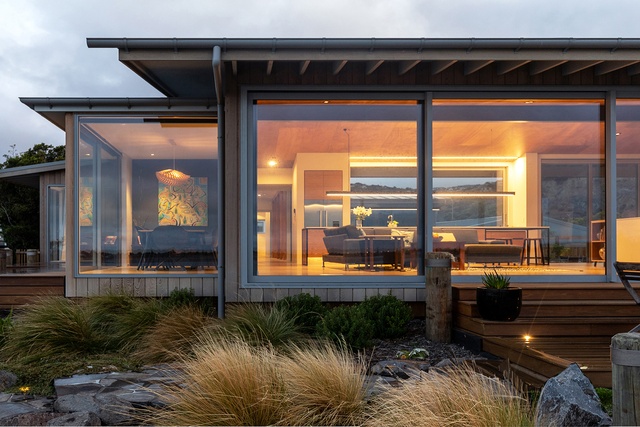
If not for the Covid lockdown, the jury would have relished the opportunity to truly experience this house. A series of four pavilions sits lightly on the surface at the edge of the Redcliffs Estuary, with views captured in full-height glory by glazing that extends below the living floor-line. A sense of calm and tranquillity infuses this home, which is a harmonious blend of Japanese forms and Kiwi craftsmanship. Rooms slide secretly behind a central spine of timber and glass, flanked by oversized glass panel doors and timber walls, different combinations of which allow internal spaces to open into the internal courtyard, retreat into their own privacy, or achieve a balance of both.
Houhere by New Work Studio/Tim Nees Architects
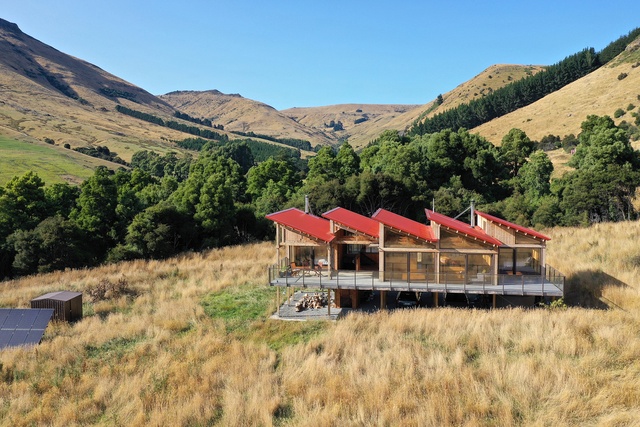
A truly casual Kiwi weekender built with retirement in mind, this off-the-grid building references the rural vernacular of DOC huts, resulting in an architecture that is unpretentious, functional and uplifting. Through clear, considered planning, compartmentalised interior spaces are unified by overhead clerestory glazing, creating spaces that are comfortable in scale and finish. A sawtooth roofline that reaches to the east to greet the morning su sits atop expressive timber trusses and post-and-beam construction. Plywood-lined wall and floor surfaces create a robust, rustic and light-filled interior. A celebration of sustainable construction and living, this house expresses its integrity, not only through its crafted timber construction, but also through its identity as a sustainable insertion into its powerful rural setting.
Park Terrace by PRau

A post-earthquake rebuild that acknowledges and playfully interrogates Christchurch’s architectural heritage, this black gable form is exquisitely composed via a process of addition and subtraction. Riffing on the themes of warehouse and home, Flemish bond brick on the tough south edge contrasts with glazing on the north and west façades, offering stolen views through the neighbour’s garden and willow trees to the park. Internally, a raw industrial aesthetic is balanced by elegant detailing. Drama and contrast underpin the architectural configuration, with a steel-lined circulation spine mediating the industrial and the domestic, while dark brick walls dematerialise at night and the building comes out to play.
Terrace House by Sheppard & Rout Architects and C. Nott Architects

A clear and considered response to this hill-side site flowed from the architects’ initial concept model. The house rises from the land as an extruded form, with the overlapping roofs serving as the fifth, and most-telling, façade. Viewed from the winding pedestrian approach, the house evokes a sense of familiarity and warmth. Across the threshold, relaxed living spaces lead into a towering spine wall that appears to have grown out of the site. Openings to the courtyard allow a transitional softening into the landscape, and planting has already blurred the line between what has been built and what has been grown.
Hawthorne Street House by Sheppard & Rout Architects

The folded roof that envelopes this house is a simple formal response to complex site constraints. Within the strong exterior form, spaces are layered vertically and horizontally, delineating private space while admitting sunlight deep into the interior and offering garden views. A palette of robust materials creates a cosy and relaxed atmosphere, and beautifully detailed joinery articulates but does not dominate interior spaces. The house turns its back to the street but offers character, and a bit of fun – and a neighbourhood talking point – via a backlit polycarbonate façade with colour-changing LED lights. The design employs double-height spaces and full-height glazing to connect the house to the private, north-facing garden.
Chippindale House by Stephenson and Turner NZ

An architect’s own home is a special cause for celebration. Sited on a lava flow embankment with views over Whakaraupo harbour, the house, with its ‘Canterbury prickle’ detailing, evokes an earlier era, while being eminently fit for contemporary use. Clever planning, in which a sequence of arrival, entry and occupation is ordered in a linear progress from public to private, accommodates the clients’ extensive art and objects collection, and their love of cooking – hence the 5.5metre prep bench! A simple half gable is extruded and curved along the site’s natural topography; the solid spine offers protection and privacy, while the concealed elevation is carefully articulated to break down and distribute the expansive 200 degree view into human-scale apertures. This is a house that focuses views and separates spaces, simply, carefully and deliberately.
Resene Colour Award
Within the simple black fold of its cladding the house exhibits a wonderful use of colour that complements the owners’ lifestyle and the objects with which they surround themselves.
Riverside House by Three Sixty Architecture
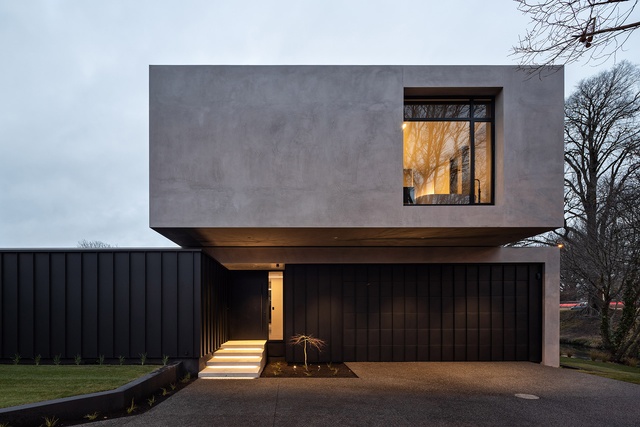
The Riverside House is an example of simplicity done well – an uncomplicated idea realised with resolute precision. On paper, the house is a pragmatic series of rectangular pavilions, stacked and arranged to create privacy on a busy corner section. In reality, the house is a sculptural composition of vigorous forms seemingly glancing past one another without direct connection. The program successfully mitigates the irregular site geometry and numerous constraints by using as precedent the footprint of a previous dwelling, and then enhancing the engagement with the Otakaro/Avon River and Hagley Park to the southern boundary. Deep windows set into the periphery of the monolithic forms offer seductive glimpses into interior spaces.

Housing – Alterations and Additions
Toto Whare by Bull O’Sullivan Architecture
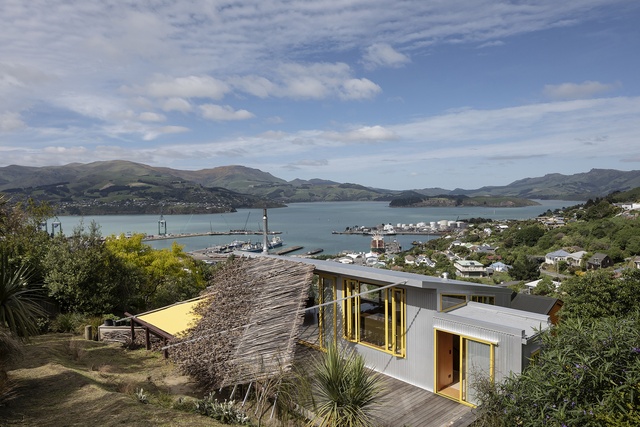
This re-working of a state house on the steep slopes above Lyttelton harbour is what creating a strong, safe, and nurturing family home is all about. The hand of the architect is evident in the details, finishing and furniture of a project that is clearly the result of a robust collaboration with the client. The new addition is staggered above and beyond the existing building, allowing selected views to the harbour in one direction and connection to the site, and outdoor living areas, to the other. This upper floor addition, light-filled and open, contrasts with the more intimate and quiet spaces of the lower floors. Strong cultural and philosophical ideas, along with the use of natural finishes and reclaimed native timbers, including korari harvested from the site, are literally and figuratively woven together seamlessly to create this whare.
Resene Colour Award
The bold use of colour complements the ideas underpinning the design and enhances the house’s strong relationship to its context.
Housing – Multi-unit
Paragon Apartments by Sheppard & Rout Architects
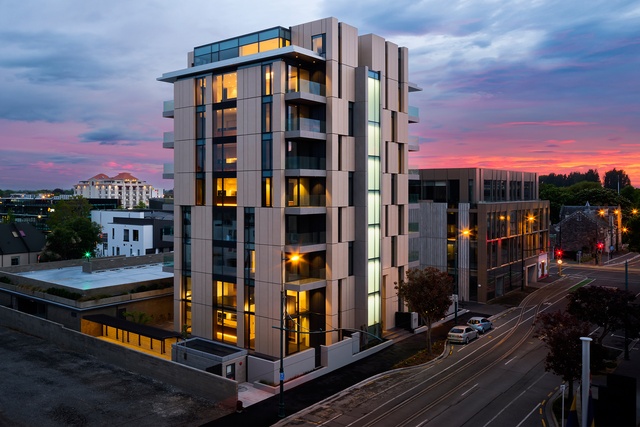
This carefully controlled multi-unit development in Armagh Street exudes sophistication and grandeur, and fully satisfies the client’s brief for structural and personal security. Impressive restraint has been exhibited in material selection and the pared-back interior aesthetic. Externally, the façade modulation and layering sits comfortably within the building’s urban context. The apartment planning is testament to a rigorous design method that transcends the ‘box’ archetype of the inner-city unit. Living spaces, in both plan and section, show a nuanced marriage of form and function. A Vogue Living existence is promised to the fortunate occupants of the Paragon Apartments.
Commercial
Bathroom Pavilion by Architype
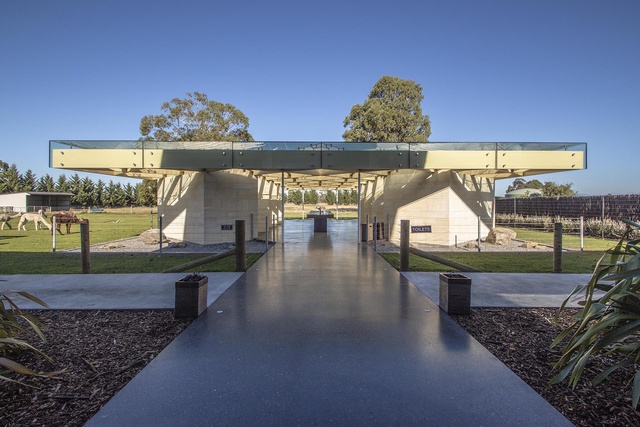
Seldom is the term ‘experience’ associated with an ablutions block, at least not in a positive sense. However, visitors to Farmers Corner are treated to just that. A latticework of exposed glulam beams is perched upon a series of appropriately clad Oamaru Stone fins, rotated 45 degrees to provide privacy between cubicles. Bravely located in front of an existing utilitarian retail and restaurant building, the new bathroom pavilion extends the entry axis centrally over a 4-metre-long communal vanity and out to the rural landscape beyond. A large fritted picture window within each cubicle provides the transient clientele an opportunity to interact with live alpaca while preparing for the journey ahead.
The Welder by Three Sixty Architecture
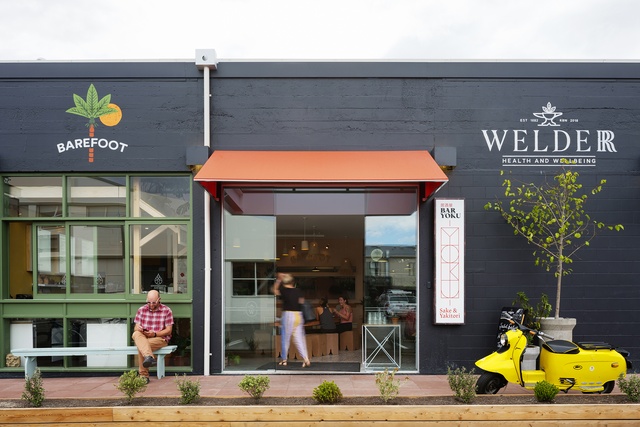
The Welder is an exemplary architectural response to a brief that reimagined a cluster of existing industrial buildings, mixed-use tenancies and public spaces as a community hub for health and wellbeing. The architect’s moves were to combine an open, airy layout with harmonious pathways and a central atrium to create a space that feels like an urban laneway. The ad-hoc design language created by mixing new with heritage also speaks to each tenancy, encouraging each to develop its own distinct feel, while unifying them with signage and planting. A conscious effort to retain as many existing materials as possible, along with new wooden elements made from recycled timber, have resulted in a tactile environment with old-world charisma.
Kathmandu Building by Wilson & Hill Architects

Occupying a prominent city corner at the end of Cashel Mall, this new flagship store plays an important role in its retail context. The architect has used folded forms to create two bold, unique façades that the public can engage with and easily identify. Two digital screens on the upper level provide movement and colour and cast light onto the streetscape, adding dynamism to this retail hub. While the building is in fact only a single level, its scale is of a two-storey building, cleverly doubling its peer on the opposite corner – the iconic Ballantynes. A thoughtful, considered urban response.
Education
McCombs Performing Arts Centre, Cashmere High School by Athfield Architects
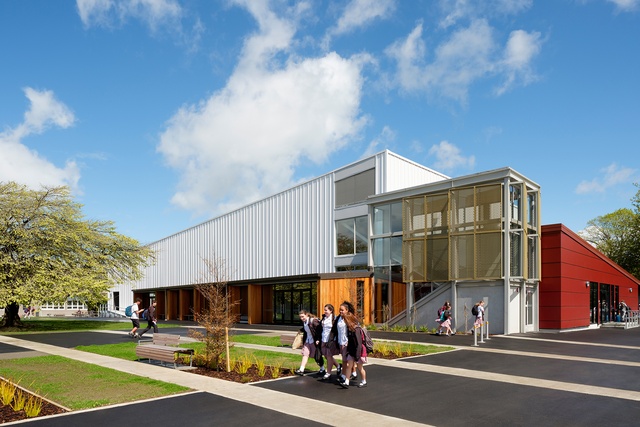
Cashmere has gained a creative focal point for its high school and the community at large in the form of this new facility. A light and semi-transparent envelope provides an active edge to the Performing Arts Centre at Cashmere High School. Students add motion to a backdrop of multi-layered spaces and contrasting materials, adding a new element of cool to the school. Formally, the primary wedge is met head-on with the golden glow of the entry box, allowing glimpses of students and staff flowing through the spaces. Bold colour moves in the foyer are offset against a natural material palette in the more private spaces, while the pure white auditorium highlights the stage and audience in one swoop, without excessive lighting effects.
Te Tipu – The Rabbit Patch Preschool by PRau
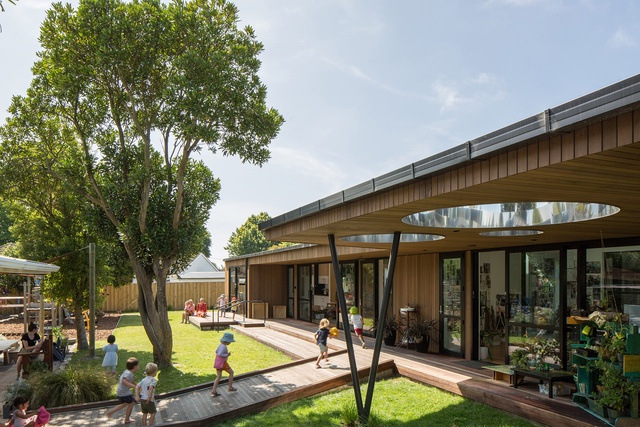
This preschool building turns its back to the street to create an enclosed space where children can interact and respond to the play of light, shadow, texture and reflection created by its architecture. Deliberately residential in scale and material, Te Tipu feels familiar and intimate, with a calm and neutral interior and a flexible framework that facilitates creativity, investigation and reflection. A playful sequence of associated spaces, divided and connected by a central battened timber wall, allows visual connection and separation between a pair of opposing ateliers. Exceeding its role on an established preschool site, this building has become a teaching tool that celebrates the sensory experiences of architecture.
Interior Architecture
ANZCO Foods Head Office by Jasmax, Sheppard & Rout Architects and Three Sixty Architecture in association
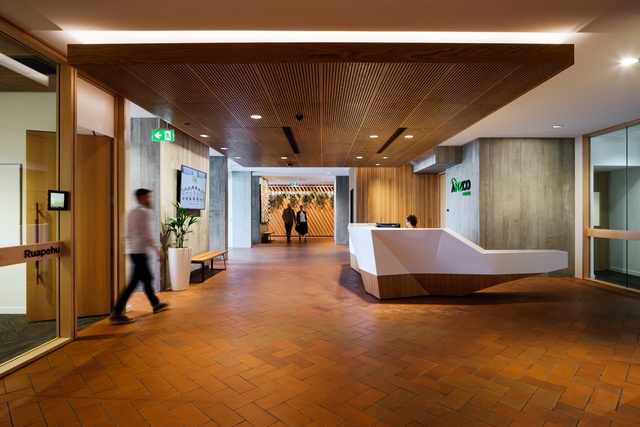
In this enviable workplace a sophisticated interior alludes to the client’s industry in a tasteful and unpretentious manner. An agricultural narrative has been translated through rich, earthy tones of exposed concrete, New Zealand Blackbutt timber and earthen tiles. Industry references are used subtly throughout, none more impressively so than a screen wall made of 300-year-old timber sourced from the butcher’s floor in London’s famous Smithfield Market. A successful collaboration between the interior and base build architects has enabled the seamless incorporation of client-requested modifications while maintaining the architectural integrity of the broader concept.
St Patrick’s Church by WSP Architecture
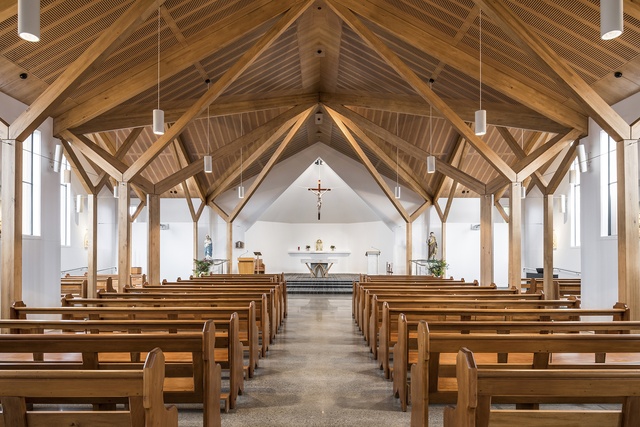
In this beautiful, understated space Lincoln’s Catholic community has a new home in which to celebrate its faith, move beyond the destruction of the Canterbury earthquakes and showcase its commitment to sustainability. The church has a traditional cruciform plan, sensitively reinterpreted to call to mind the memory of the building it has replaced. Entry into the church is via the compressed narthex that leads to the nave. The contemporary design of the vaulted timber ceiling creates a sense of verticality and transcendence; the interior is flooded with natural light from vertical windows along the aisles. The use of timber brings an ageless warmth to the interior and provides structural resilience. The pared-back elegance serves to showcase the salvaged Stations of the Cross which are sensitively sited and effectively displayed.
Public Architecture
Dark Sky Project by Sheppard & Rout Architects
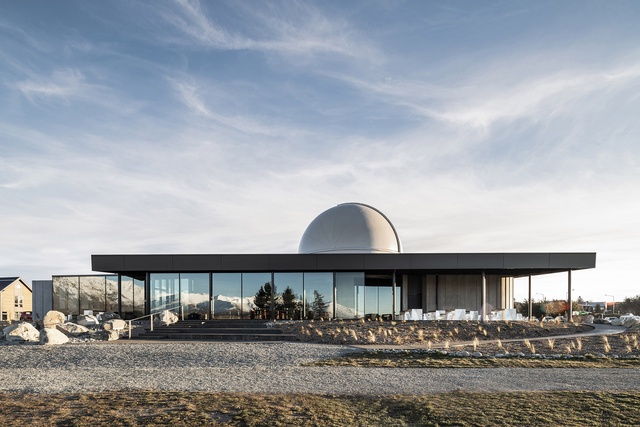
This is a bold and brave insertion into the traditional context of Tekapo – an assertive dissent from vernacular orthodoxy – and the result is a successful convergence of horizontal and vertical elements: Rangi and Papa in harmony. The soaring, omnipresent canopy hovers as a continuum in the night skies, with the transparent glazed interior glowing from within. The project, undertaken with a Ngāi Tahuentity, reveals a clever interweaving of Māori mythology and scientific discovery through its multi-layered spaces. The Brashear telescope adds a suggestion of steampunk, a quirky twist to the simple forms elsewhere. Dark Sky is a most welcome facility for Tekapo, with an architectural aesthetic that will stand the test of time – and space.
All Souls Anglican Church by Warren and Mahoney Architects

The simplicity of the monochromatic form gives the architecture its power to command its corner site. Rising towards busy Papanui Road in one long, elegant monopitch, the white church beckons pedestrians down the residential side street towards the main entry marked by the central chapel – a vertical cone sitting alongside the tapering, horizontal form. The understated north-facing plaza at the main entry affords glimpses through the building to beautiful garden spaces, inviting passers-by as well as the church community to linger, connect and participate. Creatively rehoused, the original stained-glass windows, recovered from St. Mary’s and St. Matthew’s churches, are brought together and arranged around the glazed sides of the tapering chapel cone. This intimate space is a wonderful place for contemplation.
Resene Colour Award
The disciplined use of white on cladding materials renders the purity of the long gable form crisply legible. Daylight is drawn into the translucent vertical glass cone of the chapels illuminating salvaged stained-glass windows and spilling rich hues across surfaces of the chapel and entry foyer.
Heritage
Christchurch Town Hall by Warren and Mahoney Architects
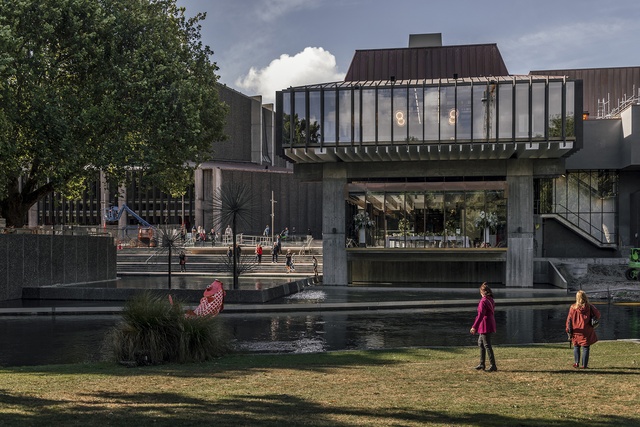
Originally completed in 1972, the Christchurch Town Hall has been described as the “city’s living room”. As one of New Zealand’s best-known examples of Brutalism, the building represented a response to post-war austerity and to the newly expressive use of reinforced concrete or “Béton brut”. The 2010/2011 earthquakes destabilised the land upon which the complex rested, resulting in a 300mm settlement across the building. Demolition was initially mooted, but a public outcry saw the City Council commit to restoring the complex in 2015. The fundamental principle was “to do as little as possible but as much as necessary”. Alongside remedial works, the architects identified several new elements that would increase the value and amenity of the building without lessening its integrity, including a new 1500m2 block for the Christchurch Symphony Orchestra.
Fendalton House by Herriot Melhuish O’Neill Architects
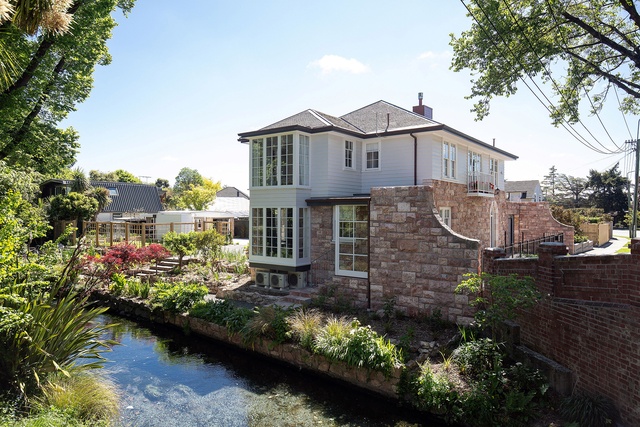
This project celebrates the tenacity of a passionate client and the adroitness of a respectful architect. In this instance, the architect has assumed the role of custodian to ensure the restoration and significant structural upgrade of this historic Heathcote Helmore design has been implemented with restraint and regard to the original architect. A new generation of artisan has authored a new chapter in the story of this home, in particular with the meticulous reinstatement of the Hanmer Marble wall cladding. This grand old lady once again takes pride of place at the edge of the Otakaro/Avon River.
Enduring Architecture
Cox Street R C Webb Flats (1974) by Warren & Mahoney

This very precise block of four ‘flats’ (as was the term used in the old days) comprised of unpainted concrete blocks, 45-degree pitched metal roofs and painted timber joinery reassuringly maintain a striking street presence 46 years after they were built. The south elevation a masterclass of simple forms, with truthful proportions and elegant details that have only improved with time. The architecture is clearly domestic, but its brutal expression and austerity is almost commercial, prefacing the architects’ later contributions to that class. It is this legacy that has elevated these houses beyond the norm and put them firmly on the map for architecture enthusiasts.
Planning and urban design
Tainui St and Town Square by WSP Architecture

The revitalisation of Greymouth’s CBD has created a much-needed, high-quality public venue suitable for a wide range of events, including festivals and markets. An extensive engagement process has informed the realisation of a distinctive urban space that reflects the values and aspirations of the whole community, including and especially Ngāti Waewae, the local mana whenua – the incorporation of a sculptural rain shelter acknowledges Ngāti Waewae’s history and connection to the area. The positive effects of the town centre renewal are already evident: the project has been a catalyst for community engagement and a spur to both private and further public development around the town square. In sum, the project is a triumph of design through engagement and robust discussion, and a successful amalgam of architecture, planning and sculpture.
Small Project Architecture
University of Canterbury Electrical Link Building Re-clad by Warren and Mahoney Architects

What at first glance seems to be a simple makeover of an existing structure is actually a beautifully orchestrated response to a multitude of inherent and problematic design issues. The architects of the Electrical Link Building Re-clad have approached the pragmatic design brief as an opportunity to re-imagine the building through the development of a crisp, white perforated mesh screen – pervious to light but impervious to avian interference – that envelops the existing structure. The sharp hexagonal geometry of the existing floor plate has been celebrated and enhanced to create a vertical beacon within a predominantly horizontal neighbourhood.
The NZIA Local Awards programme has been supported by Resene for the last 30 years.



